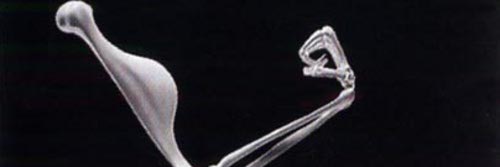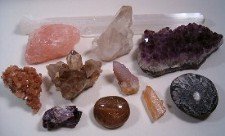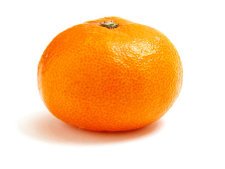
When I was a kid, I used to laugh at those commercials for Life Alert. You know the ones, where the woman takes a spill and cries, “Help, I’ve fallen and I can’t get up!” It wasn’t funny then and it’s not funny now, but it does highlight just how serious falls can be.
The statistics regarding osteoporosis may eventually apply to you. There are some easy ways to keep your bones strong and healthy beyond a daily calcium supplement!
What’s the Big Deal?

Osteoporosis is a disease where bones thin and weaken due to calcium depletion. Bones become porous and weak, and therefore more susceptible to breakage.
Generally the sufferers are senior citizens, though the thinning may begin around age 35 and sometimes even earlier. Osteoporosis often goes unrecognized until there’s a fracture. Around ten million Americans are affected with the disease.
This condition has a nasty track record — it’s responsible for more than 1.5 million fractures per year in the United States. One in nine Americans will be diagnosed with the disease in their lifetimes, 80% of them being women.
Osteopenia is a sister disease, often a precursor to full-on osteoporosis. It is characterized by lower than normal bone mineral density and affects approximately 18 million Americans.
It stands to reason that increasing your intake of calcium should help, but that’s only part of the story. Consider chalk. It’s 100% calcium carbonate, and it is easily snapped in two. Here are some of the best ways to strengthen your bones besides just beefing up your calcium intake.
Synergistic Minerals

Bones are more than just calcium. Beyond the white stuff, they are composed most significantly of magnesium, potassium, manganese, silica, iron, and zinc. Selenium, boron, phosphorus, sulphur, chromium (as well as a few dozen lesser-represented minerals) are helpers, but we’ll focus on the first group today.
Magnesium is required by the body to remove calcium from the soft tissues and deposit it into the bones. There are many ways to get magnesium, but you know by now that I’m into dietary sources. The good news is that you’ve got lots of choices here! Some foods high in magnesium are: nuts, brown rice, millet, buckwheat, whole wheat, and rye, as well as lentils, split peas, black beans.
I’ve talked at length in previous articles about the importance of potassium, and the bones are no exception. Aside from the humble banana, root vegetables are fantastic options for potassium. Prefer the sweet stuff? Melons, peaches, and molasses are great sources!
Manganese is another critical bone-builder. It’s no surprise that the most nutrient-dense foods on Earth, leafy greens, are chock full of the stuff. Raspberries, pineapple, and real maple syrup are other great options to get your daily dose of manganese.
You’ve probably never thought of the amount of silica in your diet, and there’s a very good reason for that. If you consume adequate amounts of the foods previously listed in this section, you’re already there. Aside from root veggies, leafy greens, and brown rice, you can kick back with a beer and tell your friends that you’re getting an absolutely necessary mineral!
Besides meat, you’ll find iron in sea vegetables, leafy greens, lima beans, and the ever-wonderful quinoa. Zinc is also abundant in meat, as well as dairy products, brown rice, beans, and pumpkin seeds.
I hope you’re seeing what wonderful benefits come from eating a diet rich in whole foods. Not only will you stem the tide of heart disease, diabetes, and stroke, but you’ll have strong bones to carry you through your newly extended life!
Avoid Calcium Antagonists

One of the most fascinating things I’ve read of late is that when the diet is too high in acid, the bones are leached of calcium. In the long-term, this can be extremely hazardous!
In the Journal For Nutrition, a publication of the American Society for Nutrition, an article was published supporting the importance of maintaining a proper pH balance for bone health:
The long-term studies of MacDonald and New and their colleagues support Wachman and Bernstein’s assertion that 15% of skeletal calcium can be lost over a decade to buffer a mild metabolic acidosis as a result of dietary practices.
Be aware that caffeine and alcohol cause magnesium to be excreted in large amounts in the urine. If you’re struggling with a magnesium deficiency, you’ll want to seriously limit both.
Along with those two, eating too much refined salt prevents the body from utilizing calcium. As the body works to flush out the excess sodium, precious calcium goes along for the nephritic ride. Yep, you just pee it all out!
A Different Kind of Iron

Besides the kind you eat, another kind of iron is extremely important for bone health — the kind you pump!
Certainly an ounce of prevention is worth a pound of cure when it comes to osteoporosis, and lifting weights is a great way to do that. Of course, there are plenty of weight-bearing exercises that don’t require hitting the stacks.
In fact, most doctors will recommend starting with things like walking at a fast clip, jumping rope, step aerobics, dancing, stair climbing, and hiking to strengthen the body.
For those whom lifting weights is an option, it’s best to start sooner rather than later. Of course, always consult your health care provider before you embark on a new fitness regimen, especially if you’ve already gotten a diagnosis of osteoporosis or osteopenia.
Final Thoughts
The body requires high-quality fats to most effectively build bones. Be sure that you’re getting adequate amounts of avocados, olive, and coconut oils to break down the fat-soluble vitamins needed to build bones.
Vitamin D is one of those vitamins, so be sure that you’re getting enough time in the sun. Since daylight hours wane as we head into autumn, be sure to increase your intake of fatty fish and/or their oils (salmon, mackarel, and sardines).
Our vegan friends need to be extra diligent about sunshine, but there is a supplement called RAW D3 from Vitamin Code that may fill the bill.
It never ceases to amaze me how getting back to a traditional diet of whole, nourishing foods will alleviate almost all modern ailments. Seeing the same foods recommended time and time again for different health conditions strengthens my resolve to eat well to be well!